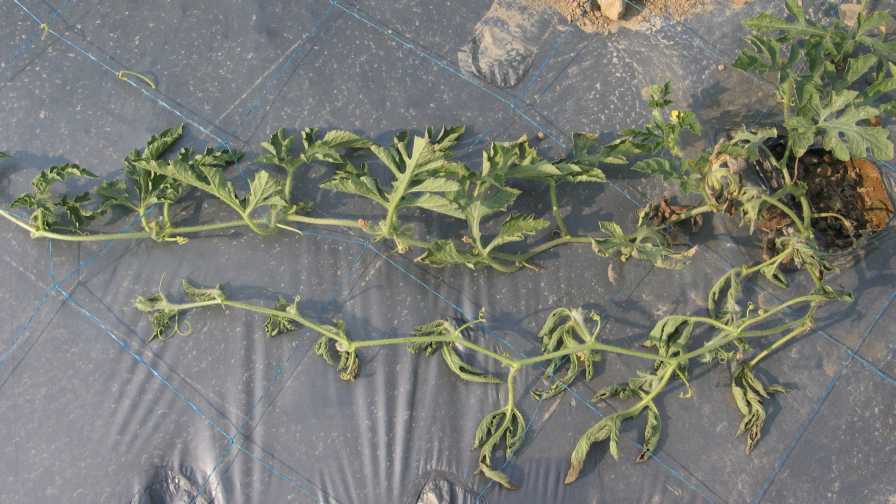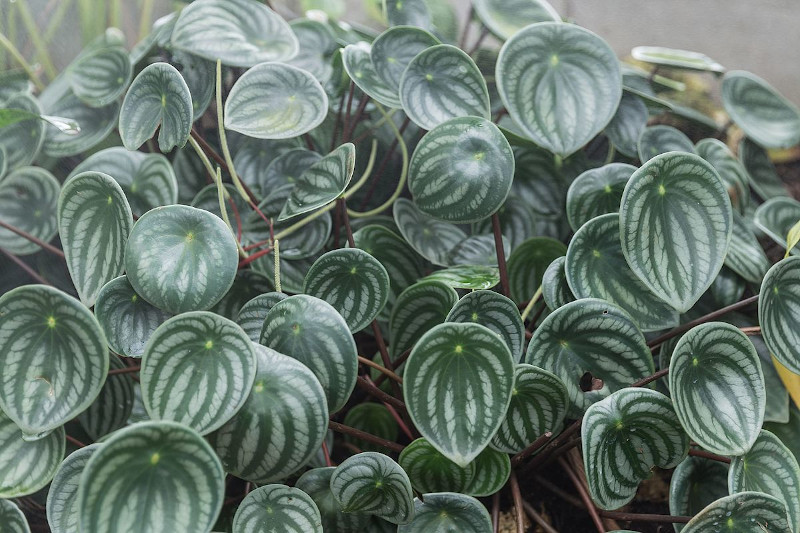To save a dying watermelon plant, ensure proper watering, sunlight, and nutrient balance. Inadequate care can cause wilting and death.
Growing watermelon plants can be a rewarding experience, especially when you see the vibrant green vines flourishing and the promise of tasty, juicy fruit. However, sometimes these plants can start to wilt and show signs of distress, indicating they may be dying.
A dying watermelon plant can be a result of various factors such as inadequate watering, insufficient sunlight, or nutrient imbalance. To rescue your watermelon plant, it is crucial to address these issues promptly. We will discuss practical tips and techniques to save a dying watermelon plant, so you can enjoy a harvest of delicious and succulent watermelons.

Credit: www.growingproduce.com
Causes Of A Dying Watermelon Plant
A dying watermelon plant can face several causes such as lack of water, poor soil conditions, and pests and diseases. Insufficient watering leads to dehydration and wilting, impacting the plant’s overall health. Similarly, poor soil with inadequate nutrients hinders proper growth and development.
It is crucial to provide sufficient water and maintain the soil’s quality by adding organic matter and fertilizers. Additionally, pests like aphids and diseases like powdery mildew can attack the plant, weakening it further. Regular inspection and appropriate pest control measures are necessary to ensure a healthy watermelon plant.
By addressing these causes, you can effectively save a dying watermelon plant and promote its growth and productivity.
Signs Of A Dying Watermelon Plant
Signs of a dying watermelon plant include wilting leaves, which may indicate inadequate water supply. The leaves may also turn yellow or brown, signaling possible nutrient deficiency or diseases. Another sign is stunted growth, where the plant fails to grow as expected.
To save a dying watermelon plant, it’s crucial to address these issues promptly. To revive wilting leaves, ensure proper watering and consider providing shade during extreme heat. Yellowing or browning leaves can be combat with appropriate fertilization and disease control measures.
Stunted growth may require adjusting soil conditions, such as pH and nutrient levels, ensuring adequate sunlight exposure, and removing any competing weeds. Combining these steps can help revive a dying watermelon plant and ensure healthy growth.
Wilting Leaves
The watermelon plant is showing signs of wilting, with its leaves drooping and appearing dry and crisp to the touch. To save the plant, there are a few steps you can take. First, ensure that the plant is receiving sufficient water, as dehydration can cause wilting.
Check the soil moisture regularly and water accordingly. Secondly, provide adequate shade for the plant during the hottest parts of the day to prevent excessive heat stress. Additionally, inspect the plant for any signs of pests or disease and take appropriate measures to control them.
Proper fertilization can also help revive a dying watermelon plant, so consider using a balanced fertilizer to provide essential nutrients. Finally, ensure that the plant is receiving enough sunlight for optimal growth. By following these guidelines, you can increase the chances of saving your wilting watermelon plant.
Yellowing Or Browning Leaves
Yellowing or browning leaves on your watermelon plant can be a sign of trouble. Discoloration often begins from the edges, gradually spreading throughout the entire leaf. To save your dying watermelon plant, it’s essential to identify the cause and take appropriate action promptly.
The most common reasons for leaf discoloration include nutrient deficiencies, over or under watering, pest infestation, or disease. Conduct a thorough examination of your plant to determine the exact issue. Adjust the watering schedule if necessary, ensuring the plant receives adequate moisture without being waterlogged.
Provide the plant with the proper balance of essential nutrients, either through organic amendments or fertilizers. Additionally, inspect for any signs of pests or diseases, taking appropriate measures to control and prevent their further damage. With proper care and attention, you can revive your watermelon plant and ensure a healthy harvest.
Stunted Growth
Sometimes, watermelon plants may experience stunted growth due to various factors. One common issue is the lack of vertical growth, causing the plant to remain small and underdeveloped. Several reasons can lead to this problem, including insufficient sunlight, improper nutrition, or incorrect watering.
To save a dying watermelon plant, it is crucial to address these issues. Ensure the plant receives enough sunlight throughout the day by placing it in a sunny location. Additionally, provide the plant with the proper nutrients through fertilization. Regularly monitor the soil moisture to avoid both overwatering and underwatering.
By taking these measures, you can give your watermelon plant a better chance to thrive and produce healthy, delicious fruits.
How to Save a Dying Watermelon Plant: Detailed Guide
Steps to save a dying watermelon plant start with identifying the problem. Assess the plant’s water needs and check the soil quality. Next, focus on watering and irrigation. Set up a proper watering schedule and use moisture meters or the finger test.
Mulching can help retain moisture. Soil improvement is crucial, so conduct a soil test and add organic matter or compost as needed. Adjust pH levels if necessary. Pest and disease management is vital too; identify common watermelon pests and apply organic insecticides.
Take preventive measures to avoid diseases. Lastly, provide necessary support by using trellises or stakes and prune for good air circulation. Following these steps can help revive a dying watermelon plant.
Preventive Measures For Healthy Watermelon Plants
Watermelon plants can sometimes struggle and begin to wither. To avoid this, it’s crucial to take preventive measures. Start by choosing disease-resistant varieties of watermelon plants. This helps them stay healthy and fight off potential diseases. Another important step is rotating your crops.
This prevents soilborne diseases from building up and affecting your plants. Regularly inspect your watermelon plants for any signs of disease or pests. Catching problems early on allows you to take immediate action and save your plants. By following these preventive measures, you can ensure your watermelon plants thrive and produce delicious fruit.
Frequently Asked Questions On How To Save A Dying Watermelon Plant
Why Does My Watermelon Plant Look Dead?
Your watermelon plant may appear dead due to factors like overwatering, lack of sunlight, or pests.
What Does Epsom Salt Do For Watermelon Plants?
Epsom salt improves watermelon plant growth by providing essential nutrients like magnesium and sulfur.
Can Watermelon Be Overwatered?
Yes, watermelon can be overwatered if it receives too much water, which can lead to root rot.
Do Watermelon Plants Come Back?
Yes, watermelon plants can come back if they are properly cared for and have favorable growing conditions.
Conclusion
Taking care of a dying watermelon plant requires a combination of timely actions and proper attention. By understanding the common causes of a dying plant, such as overwatering, nutrient deficiency, and pests, you can effectively address these issues and revive your watermelon plant.
Regularly monitoring the soil moisture levels, providing adequate sunlight, and ensuring proper drainage are crucial steps in providing the optimal growing conditions for your plant. Additionally, using organic fertilizers and regularly cleaning and inspecting the plant for any signs of pests or diseases can help in preventing further damage.
Remember, patience and consistency are key when it comes to saving a dying watermelon plant. By following these guidelines and implementing the necessary measures, you can increase your chances of bringing your watermelon plant back to life and enjoy the fruits of your labor in due time.

